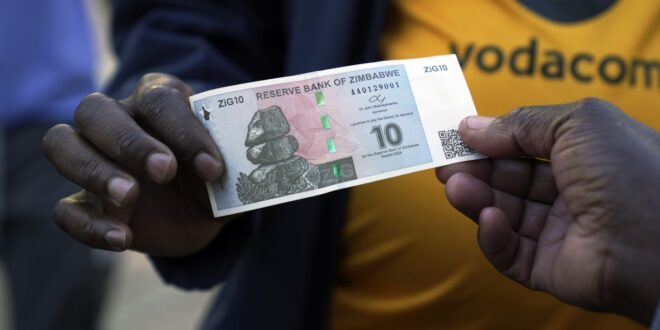HARARE: Zimbabwe’s new central bank governor John Mushayavanhu has done the seemingly impossible in his first 100 days – created a stable currency and tamed price pressures in a nation that’s been a poster-child for hyperinflation and crashing currencies.
His efforts have both enthused and drawn scepticism.
A team from the International Monetary Fund, who visited the country last month, hailed the governor’s introduction of the ZiG, short for Zimbabwe Gold, for ending a bout of currency instability.
The veteran banker unveiled the ZiG and set the policy rate at 20% a week after becoming governor, putting down a marker for his new tenure.
The ZiG – the nation’s sixth attempt at having a functioning local currency in the last 15 years – replaced the Zimbabwean dollar that lost 80% of its value against the greenback in 2024.
Its rapid decline led locals to dump it for the US dollar, which is now used in more than 80% of transactions.
Since its introduction, the ZiG has been relatively stable and kept monthly inflation in check, helped in part by Mushayavanhu’s zero-tolerance of the parallel market, which has been blamed for speculation.
Law enforcement agencies have arrested street currency dealers in their droves.
Zimbabwean President Emmerson Mnangagwa said earlier last week the ZiG may even be fast-tracked to become the sole legal tender within two years.
That puts at risk the use of US dollars ahead of a 2030 deadline when the current multi-currency system ends.
The ZiG was trading at 13.69 against the US dollar last Friday, 1% lower than its April 8 debut. In late June, the bullion-backed unit was assigned a currency code, ZWG, by the International Standard Organisation, the central bank said.
Mushayavanhu has also vowed to stick with orthodox monetary policy and avoid printing money, which plagued his predecessors.
The tight money supply has reflected on Harare’s benchmark stock index which has only risen 45% since it was rebased to ZiG in contrast to the gains of over 300% made in the first quarter of this year.
But businesses and investors who have lived through the multiple currency crises, are more sceptical.
While Mushayavanhu has made “solid progress” in achieving his targets on exchange-rate stability, lower inflation and a functioning local currency, said Lloyd Mlotshwa, head of research at Harare-based brokerage IH Securities, the jury is still out on how long it will last. “Naturally, the question is always sustainability.”
The resource-rich nation is in the throes of an El Nino-induced drought, which has curbed farm output and increased imports. It’s also dealing with lower commodity prices.
The combination is likely to impact the availability of US dollars which will affect the currency’s stability, Mlotshwa said.
The Zimbabwe National Chamber of Commerce said it’s still early days to celebrate. OK Zimbabwe Ltd, the country’s largest retailer, which has been hurt by past currency turmoil, is assessing the ZiG’s impact on its operations.
So far, “foreign currency collection have declined in favour of ZiG”, the company said on June 27. The retail giant sees “volume growth” this year.
Still, deputy governor Innocent Matshe said the central bank is committed to staying on the path of orthodox monetary policy.
“The governor is serious about sticking to the fundamentals and returning the central bank to central banking,” Matshe said in an interview. “There has been an effort not to have any sacred cows.” — Bloomberg
 BeritaKini.biz Berita Viral Terkini di Malaysia
BeritaKini.biz Berita Viral Terkini di Malaysia





